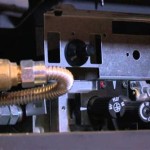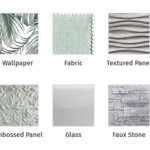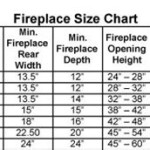Paver Fireplace Kit: A Comprehensive Guide to Installation and Benefits
A paver fireplace kit offers a convenient and cost-effective solution for homeowners seeking to add a visually appealing and functional outdoor or indoor fireplace to their living space. These kits typically include pre-cut or pre-formed pavers, along with necessary components such as mortar or adhesive, fire brick for the firebox lining, and detailed instructions for assembly. The appeal of a paver fireplace kit lies in simplifying the construction process, reducing the need for extensive masonry skills, and providing a consistent, aesthetically pleasing result. Paver kits allow for personalization, often with options for size, shape, and paver color or texture, enabling homeowners to match the fireplace with their existing landscaping or interior design.
The decision to invest in a paver fireplace kit involves several factors, including budget, design preferences, and intended use. These kits offer an alternative to custom-built fireplaces which often require hiring professional masons or contractors. By understanding the components of a typical paver fireplace kit, the installation procedures, and the advantages and disadvantages, homeowners can make informed decisions about whether a paver fireplace kit is the right choice for their needs. Furthermore, knowing how to properly maintain a paver fireplace ensures its longevity and continued enjoyment.
Understanding the Components of a Paver Fireplace Kit
A typical paver fireplace kit comprises various components designed to work together seamlessly for structural integrity and fire safety. The primary component is the pavers themselves. These are often available in a variety of shapes, sizes, and colors, allowing for considerable design flexibility. The pavers form the exterior structure of the fireplace, creating the desired aesthetic.
The firebox, where the fire is actually built, is a critical component. It is typically constructed with fire brick, a refractory material that can withstand extremely high temperatures without cracking or deteriorating. Fire brick is essential for protecting the structural pavers from direct heat exposure. The kits often include a specific number of fire bricks, pre-cut to the appropriate shapes and dimensions for the firebox design. The firebox dimensions are essential for ensuring proper ventilation and fire safety.
The mortar or adhesive is another crucial element. It is used to bind the pavers together, creating a solid and stable structure. The type of mortar or adhesive needed can vary depending on the type of pavers used in the kit and the manufacturer's specifications. Some kits use a specialized adhesive that is specifically designed for outdoor paver applications, providing added protection against the elements. The mortar also fills the gaps between the pavers, preventing water infiltration and ensuring the fireplace's long-term stability.
Many kits also include a cap or chimney component. The cap is the topmost element, providing a finished look and protecting the chimney from rain and debris. The chimney is the exhaust duct that carries smoke and gases away from the firebox. The design and height of the chimney are important considerations, as they affect the fireplace's drafting ability. Some kits may include a pre-fabricated chimney component made of metal or masonry, while others require the chimney to be built using pavers and mortar.
Detailed instructions are a non-physical yet essential component of any paver fireplace kit. These instructions outline the step-by-step process for assembling the fireplace, including diagrams, measurements, and tips for achieving a professional-looking result. Following these instructions carefully is crucial for ensuring the fireplace's structural integrity and safety.
Installation Procedures for a Paver Fireplace Kit
The installation of a paver fireplace kit, while simplified compared to building a fireplace from scratch, still requires careful planning and execution. The first step is site preparation. The location where the fireplace will be installed must be level and stable. This may involve excavating the area, adding a layer of compacted gravel, and pouring a concrete pad as a foundation. The dimensions of the foundation should be slightly larger than the base of the fireplace to provide adequate support.
Once the foundation is prepared, the assembly process can begin. This involves laying the pavers according to the instructions, using mortar or adhesive to bind them together. It is essential to ensure that each paver is level and properly aligned to create a structurally sound fireplace. The instructions will typically specify the order in which the pavers should be laid and the amount of mortar or adhesive to use. Proper spacing between the pavers is also important for aesthetics and structural integrity.
The construction of the firebox is a critical step. Fire brick must be carefully laid inside the planned firebox area, using refractory mortar to withstand the intense heat. The fire brick should be arranged to create a smooth, even surface that will protect the structural pavers from direct flame contact. Proper ventilation within the firebox is also essential for efficient combustion and smoke control. The instructions will provide guidance on the appropriate dimensions and layout of the firebox.
As the fireplace structure is built upwards, it is important to check frequently for level and alignment. Using a level and a square, ensures that the fireplace is being built straight and true. Any adjustments should be made promptly to avoid compounding errors as the structure grows taller. It’s also common practice to clean off excess mortar at each stage to prevent the mortar from drying on the paver surface.
The installation of the chimney is the final step. Whether using a pre-fabricated chimney component or building the chimney from pavers, it is important to follow the instructions carefully to ensure proper drafting. The chimney's height and design will affect the fireplace's ability to draw air and exhaust smoke. A chimney that is too short or improperly designed can result in smoke billowing back into the living space. Once the chimney is installed, the cap is placed on top to protect it from the elements.
Key Considerations and Benefits of Using a Paver Fireplace Kit
One of the primary benefits of using a paver fireplace kit is the ease of installation compared to building a fireplace from scratch. The pre-cut or pre-formed pavers and detailed instructions simplify the process, making it accessible to homeowners with limited masonry experience. This can save significant time and money compared to hiring a professional mason. However, it is important to note that some kits might still require assistance from a skilled tradesperson, especially if foundation work is involved.
The cost-effectiveness of paver fireplace kits is another significant advantage. These kits typically cost less than custom-built fireplaces, as they eliminate the need for purchasing individual materials and paying for labor. Furthermore, the kits often include all the necessary components, which avoids the expense of sourcing these items separately. However, it is important to factor in the cost of site preparation, such as excavating and pouring a concrete pad, which may add to the overall project cost.
Paver fireplace kits offer a wide range of design options. The pavers are available in various shapes, sizes, colors, and textures, allowing homeowners to customize the look of their fireplace to match their existing landscaping or interior design. Some kits also offer options for adding decorative features, such as mantels, hearths, or stone veneers. This design flexibility makes it possible to create a unique and aesthetically pleasing fireplace that complements the surrounding environment.
The durability and longevity of a paver fireplace are also important considerations. Pavers are typically made from durable materials that can withstand the elements, including rain, snow, and sun. When properly installed and maintained, a paver fireplace can last for many years, providing a reliable source of warmth and enjoyment. Regular cleaning and maintenance, such as removing ash and debris, can help to extend the lifespan of the fireplace.
Safety is paramount when using a fireplace. Paver fireplace kits are designed with safety in mind, incorporating features such as fire brick linings and proper chimney designs to minimize the risk of fire hazards. However, it is important to follow all safety guidelines provided by the manufacturer and to use the fireplace responsibly. This includes keeping flammable materials away from the firebox, ensuring adequate ventilation, and properly disposing of ash.
In addition to their functional benefits, paver fireplaces can also add value to a home. A well-designed and properly installed fireplace can enhance the aesthetic appeal of an outdoor or indoor living space, making it more attractive to potential buyers. This can be a significant selling point when the time comes to sell the property. Furthermore, a fireplace can create a cozy and inviting atmosphere, making the home more enjoyable for the current occupants.

Diy Outdoor Fireplace Kit Fremont Makes Hardscaping And Easy

Fireplaces Tremron Jacksonville Pavers Retaining Walls Fire Pits Atlanta Miami Orlando Tampa Florida Paver Manufacturer

Deschutes Fireplace Kit Wall Blocks Pavers Western Interlock

Outdoor Fire Pits Belgard Paver Pit Kits

Outdoor Fireplace Kits Stonewood S Cape Cod Ma Nh Ct

Semplice Outdoor Fireplace Kit Rcp Block Brick

Luxury Kits Delivered To Your Door

Rogue Fireplace Kit Cau Wall Blocks Pavers Western Interlock

Stone Fireplace With Verona Retaining Wall Blocks Nicolock

Create The Ultimate Neighborhood Party Destination In Your Backyard
Related Posts








